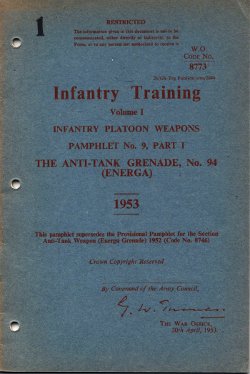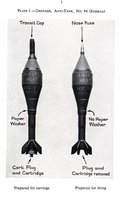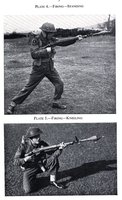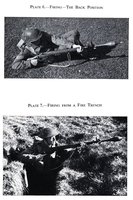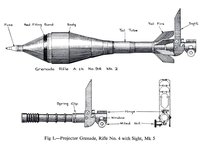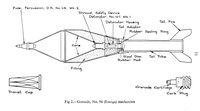Topic: Militaria
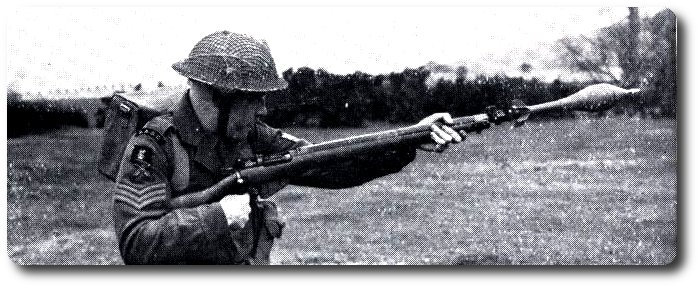
Infantry Training Volume 1 – Infantry Platoon Weapons
Pamphlet No. 9, Part 1

"It is safe to fire ball ammunition through the projector when the grenade is removed. Stress that the firer will be killed should he be foolish enough to fire ball when the grenade in on the projector."
1953
The Anti-Tank Grenade, No. 94 (ENERGA)
1. This grenade has been introduced to provide the infantry section with a powerful and effective anti-tank weapon. It is discharged from a projector attached to the No. 4 rifle, and fired by means of a special grenade cartridge.
General Characteristics
2. The weapon's chief characteristics are its great power and lightness. It is highly efficient against armour, concrete, etc., and can be used against "thin-skinned" targets.
3. Performance.—The grenade will penetat the sides and rear of the heaviest known tank. The effect of the explosion is to burn a small hole through the armour. Through this hole a high velocity jet of burning gases and molten metal from the grenade is projected into the tank. This, besides causing casualties to the drew, may set fire to the fuel and ammunition.
4. Accuracy.—The grenade is a first-class and efficient weapon. For an unrotated projectile its accuracy is of a high standard. A trained soldier should, after very little practice, group to approximately 30 inches at 75 yards. The shock of discharge on firing is, not unduly great and the firer, or any observer, can easily follow the flight of the grenade to the target.
5. Effective range.—Ideal ranges are from 25 to 50 yards. Moving targets can be engaged with reasonable accuracy at any range up to 75 yards.
6. Carriage.—The projector, when not on the rifle, is carried in a care which is attached to the waist belt. Grenades are carried in containers holding two grenades each.
Tactical Handling
1. The primary role of the section anti-tank weapon is the destruction of tanks. In its secondary role, it can be used against thin-skinned vehicles and other targets, such as personnel, houses and concrete emplacements.
2. When the weapon is sited for use in its primary role, the following points must be considered:—
(a) It needs a field of fire of only just over 100 yards.
(b) Surprise and concealment are most important.
(c) Any obstruction in its path is likely to detonate the grenade before it reaches its target.
(d) It must cover likely tank approaches, such as gaps in minefields.
(e) It is best to engage the side or rear of a tank.
(f) It is normal to fire it from a fire trench.
(g) Few grenades are carried, and fire must be held till a kill is certain with each grenade.
(h) Some defilade from the front is desirable.
3. The uses of the weapon in its secondary role are manifold. Some suggestions are:—
(a) House clearing and street fighting.
(b) Ambushes.
(c) Concrete emplacements and fortified houses.
(d) Assault boats crossing rovers, and beach landings.
(e) Enemy concealed in trees, hedges, etc.
(f) Soft-skinned vehicles.
4. When it is decided to use the weapon in is secondary role it must never be forgotten that the weapon is primarily anti-tank and that sufficient grenades must be kept for this purpose.
5. In addition to his anti-tank duties, the Energa rifleman is a member of the rifle section; if the tank threat is remote, his section commander will site him as a rifleman rather than as a tank killer.
